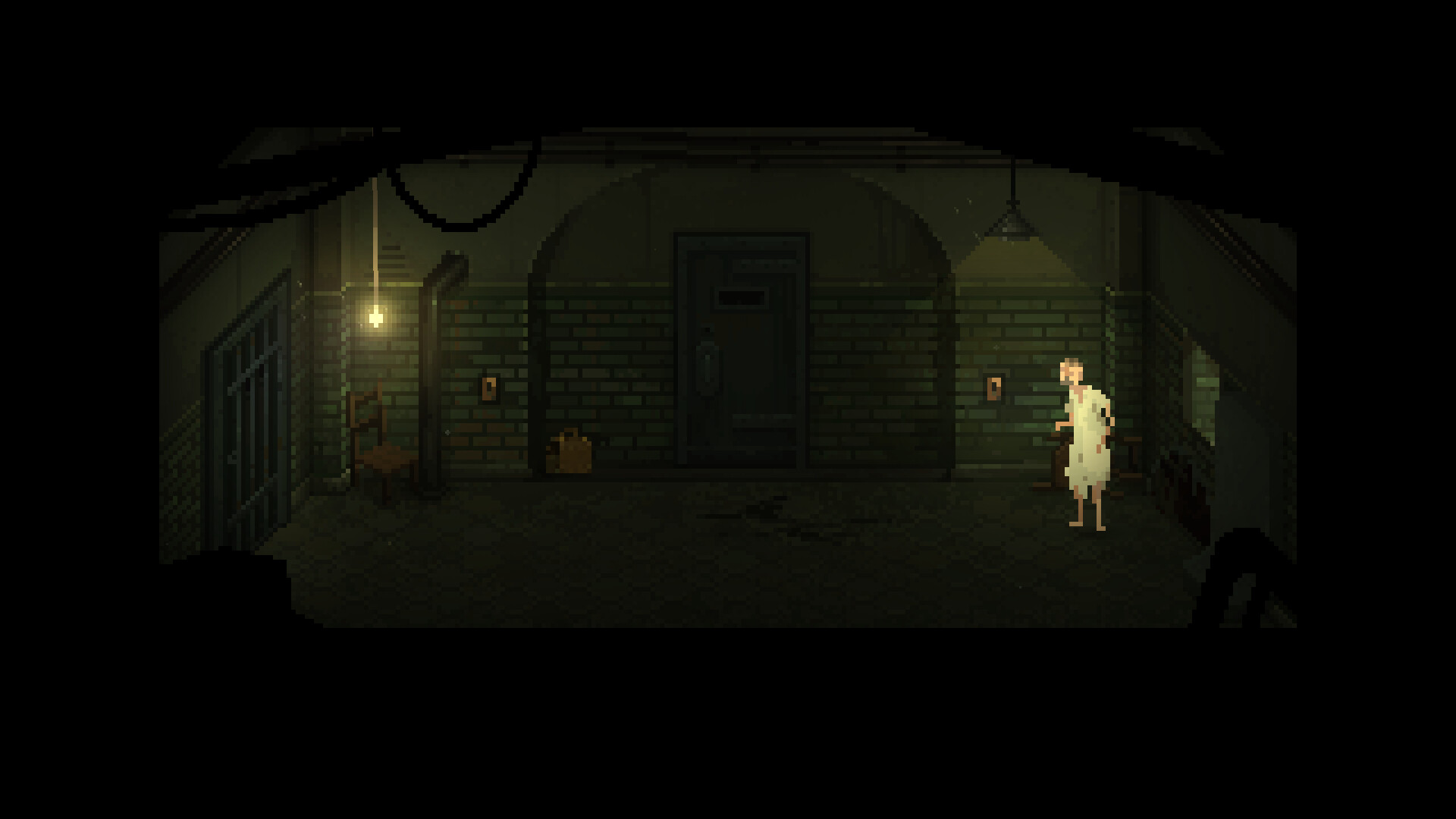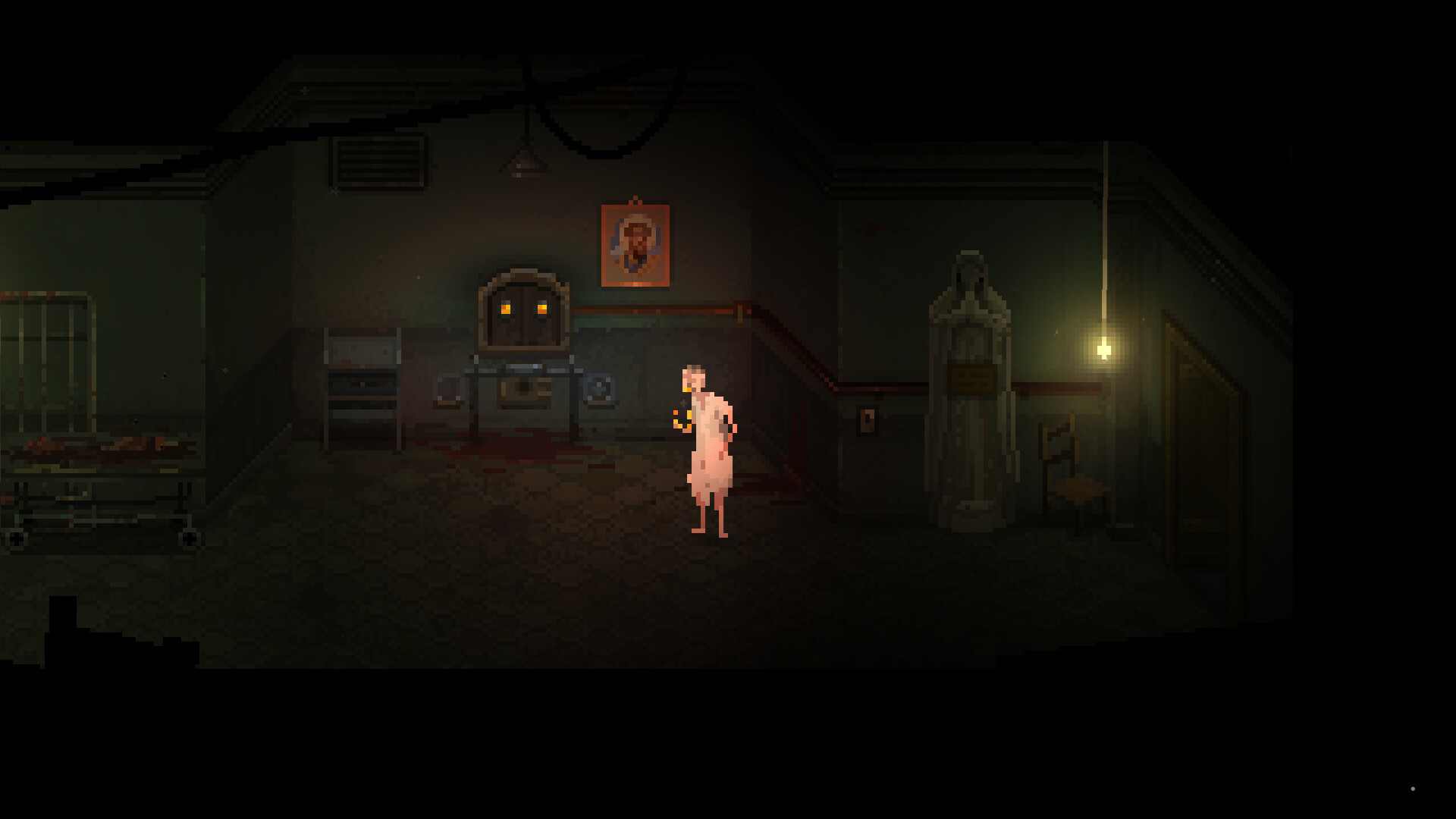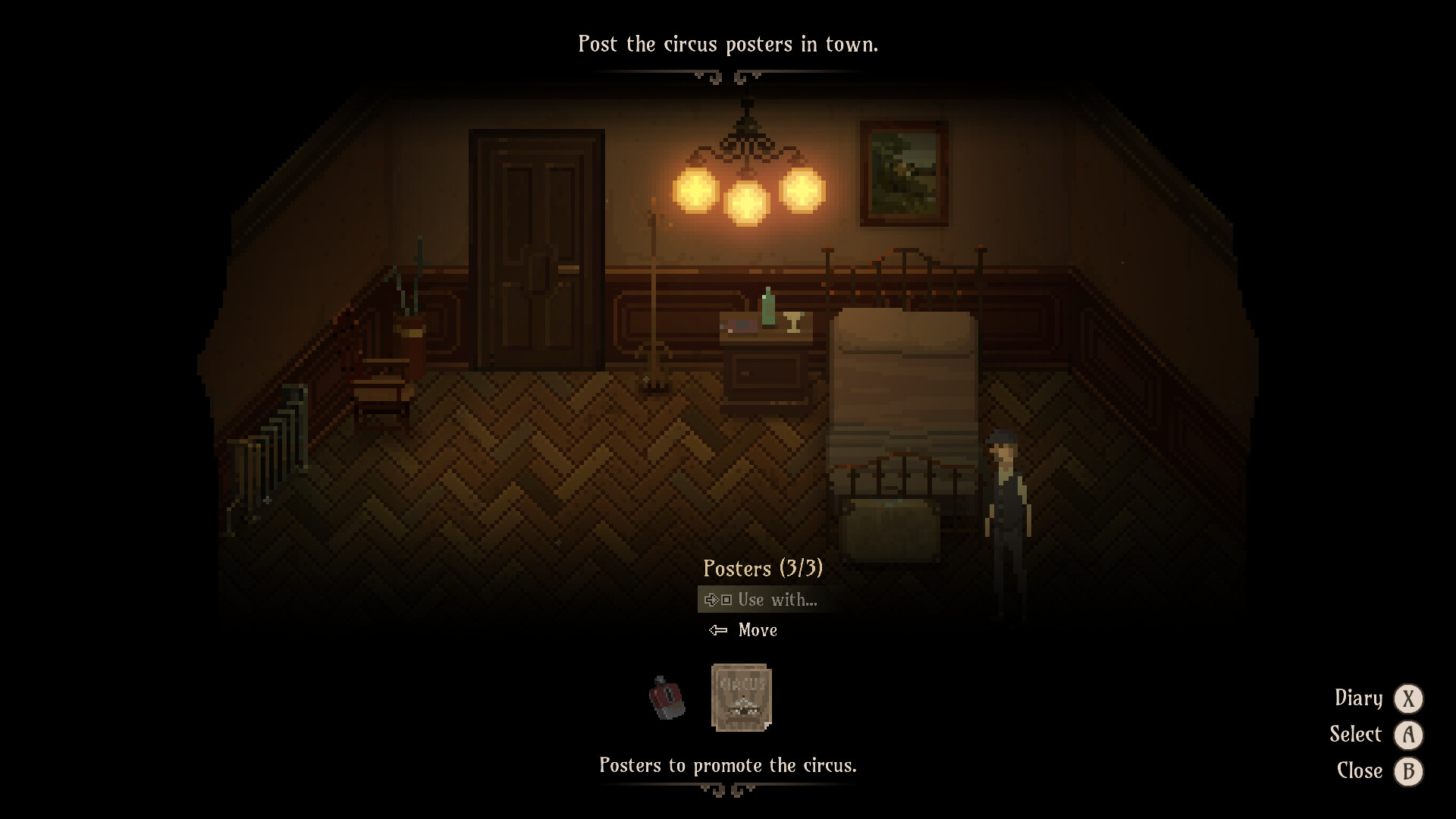Vlad Circus: The Curse of Asmodeus is Inidiesruption’s follow-up to their brief but inspired pixel art horror, Vlad Circus: Descend Into Madness. Despite a jam-packed year in 2023, especially for horror, Descend Into Madness was a refreshing diversion from the norm. Escape room-like puzzle solving, a stress mechanic you had to manage, or face a tougher time, a mansion that would give Resident Evil’s Spencer Mansion a run for its money in atmosphere, and a genuinely grizzly pixel art style that did wonders to sell its tension.
So, as you could probably imagine, I was excited to learn that there’d be a follow-up in the form of The Curse of Asmodeus. Whilst thematically conjoined, with Asmodeus being a parasite from Hell feeding on humans’ sanity, there’s no gameplay cohesion outside of its puzzle-solving. Sequels usually become an opportunity to expand on their ideas; however, Indiesruption have taken a bit of a step back here, unfortunately. We all know about the upcoming Hollow Knight: Silksong transforming from DLC to a sequel, but I think Vlad Circus should have done the opposite.
That’s not to say it’s all bad, though. Vlad Circus: The Curse of Asmodeus is a darker, more twisted narrative that explores the inherent threat of the capacity for evil in organised religion. Instead of descending into madness, you’re in the thick of it, as you play as Vlad’s brother, the alleged “villain” from the first game. It’s just a shame the journey doesn’t complement the destination, or maybe I’ve just gone mad? I don’t think so.
Why So Serious?
The Curse of Asmodeus plays as a prequel/sequel to Descend Into Madness. Spoiler alert: there’s no more Circus, and the reason for that is none other than the playable protagonist in this game, Josef Petrescu. He is the brother of Vlad and was previously a co-creator/owner of the circus, until his behaviour got him kicked out, and this is all set dressing for the previous game.
Set in the 1920s, Josef faces the electric chair as some religious zealots believe he carries the parasite known as Asmodeus. He miraculously survives, but is disfigured, unable to talk and has no memory from before. In the present sequences, Josef explores his prison, a disturbing home of the dead and the experimented on by the church in some truly graphic fashion.
However, there are mirrors littered around this dungeon/prison which transport Josef to his memories leading up to his current events, so as we learn more about him, we can also piece together the events surrounding Vlad Circus. The Curse of Asmodeus doesn’t quite match the worldbuilding of its previous game, as the focus is on Josef’s maddening journey. It’s a bold choice to tell the story of someone we knew about in the background, and loathed as we experienced everyone else’s harrowing backstory, but by the end, it pays off. Hopefully, there’ll be a third to bring it all together, but for now, the story was overall lacklustre.

Condescending Into Madness
I wish my disappointment with the game’s story was quelled by the gameplay, but alas, Vlad Circus: The Curse of Asmodeus is also a step in the wrong direction. Nearly everything that made the first game unique is stripped back in this one, and even what remains doesn’t quite cut it either. The game plays like an autonomous point-and-click puzzler, so instead of pointing to the direction or object, you’re moving Josef yourself through these 2D pixel art screens.
Whilst the environments aren’t too varied, the grizzly detail and atmosphere are intact. You’ll find items in your surroundings out of order and piece them together to solve the next puzzle for your escape. However, there were a lot of times in The Curse of Asmodeus where the game was expecting maybe a little too much brain power for me. There’s no good use of signposting to nudge you towards a eureka moment, only a brute force method that’s doable because the game isn’t that expansive.
Most of the time, the solutions were in rooms I had been in, but not with a light that discovers new objects on-screen. It seems simple and a potential oversight on my part, but there’s a dissonance between some of the puzzles that require some practical leaps in logic and the ones that were so easy they’re overlooked. In one instance, I had some “viscera” in my inventory and a boar that would eat me alive if I entered a certain room. Above that room was a grate. In my head, I could shove that through, but apparently, the grate was too narrow for me to do that.

Catching Crazy
It wasn’t until I went back to the very first room I started in, found a flashback sequence, that then triggered an event to remove the grate when I was back in the present. Stuff like that felt arbitrary and a little bit insulting to my own agency. Unsurprisingly, the flashbacks are what carry this game, in terms of storytelling, mystery revealing and general gameplay.
Instead of the dingy basement of death, you’re above ground in San Reno, exploring a sizable town, meeting unruly folk and kind of being a slimeball who’s getting his own way. Lying, cheating, stealing, you name it, Josef is doing it. It’s these moments where we also learn about the church that is performing these heinous experiments, and really get a sense of the greater evil at play here.
There’s also some more imaginative puzzle solving happening, so it’s always a bummer when I return to the present and visit the same few rooms again, looking for anything new. There’s no real danger either, you can step on glass or get bitten by rats, but it pales in comparison the Descend Into Madness, where Oliver is fighting apparitions from his psyche when he gets stressed.

Burn It Down
As you can probably tell, I’m fairly disappointed with Vlad Circus: The Curse of Asmodeus. There is nothing about this sequel that justifies its existence, other than that it continues the story of a good game. That’s not to say this is bad, because it’s decent enough, it’s just so stripped back compared to its predecessor that I can’t ignore it and review The Curse of Asmodeus on its own merit.
I’ve alluded to a potential third game, and your guess is as good as mine if it happens, but I really hope it does, just so we can go out on a high, rather than… whatever bleak ending this is. As I mentioned at the top, this could have been a DLC, and I wouldn’t have minded its stripped-back approach, but as a follow-up, this is not where I wanted it to go.
Vlad Circus: The Curse of Asmodeus will release 25th August 2025 for PlayStation 5 (review platform), PlayStation 4, Nintendo Switch, Xbox Series X|S & One, and PC via Steam.
Developers: Indiesruption
Publisher: Blowfish Studios
Disclaimer: In order to complete this review, we were provided with a promotional copy of the game. For our full review policy, please go here.
If you enjoyed this article or any more of our content, please consider our Patreon.
Make sure to follow Finger Guns on our social channels. Twitter, Facebook, Twitch, Spotify or Apple Podcasts – to keep up to date on our news, reviews and features.
